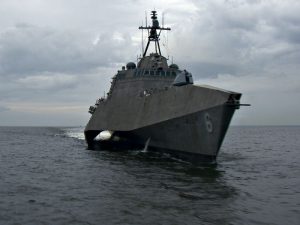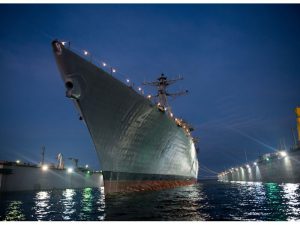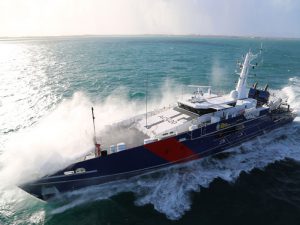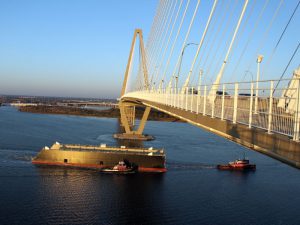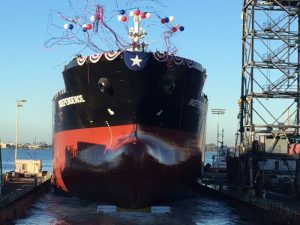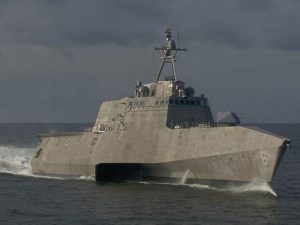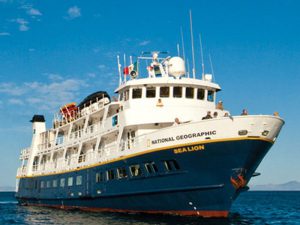In a stock exchange announcement, the company noted that in its FY2015 results it had reported experiencing schedule and margin pressure on Littoral Combat Ship (LCS) 6, the first that it is building as the prime contractor.
“Austal is building multiple LCS in parallel,” said the announcement, “with the impact of cost and schedule performance on LCS 6 continuing to impact LCS 8 and LCS 10 – both of which are in an advanced state of completion.
“Austal’s ability to apply lessons learnt and productivity enhancements from LCS 6 to vessels in advanced construction, namely LCS 8 and LCS 10, has been more limited than anticipated. As a result, FY2016 earnings from Austal’s U.S. shipyard are expected to be lower than in FY2015, with U.S. shipbuilding EBIT margin expected to be in the range of 4.5% to 6.5%. [Its U.S, shipbuilding EBIT margin was 5.2% in 2015 and 6.6% in 2014]
“Austal’s other major vessel program at its U.S. shipyard, the Expeditionary Fast Transport program (formerly called the Joint High Speed Vessel), has reached construction program maturity, with shipbuilding margin stable”.
Austal CEO Andrew Bellamy said that, while there were flow on effects from LCS 6 onto LCS 8 and 10, vessels at earlier stages of construction would benefit from the lessons learnt on LCS 6 to increase future US shipbuilding margin.
“The LCS program is maturing more slowly than we had expected, however we are working hard to manage the risks and expect an improvement across the program after delivery of LCS 10,” Mr. Bellamy said. “The ongoing strong performance of the US$1.6 billion Expeditionary Fast Transport program at our U.S. shipyard is a great illustration of the efficiencies we can deliver once a vessel program reaches the mature production phase and we are confident the LCS program will be no different.
“Austal has a strong balance sheet and is generating good cash flow, which is enabling further investment in the business during the 2016 financial year to best position the company to win additional contracts and service work to build our order book, revenue, and earnings into the future.”
